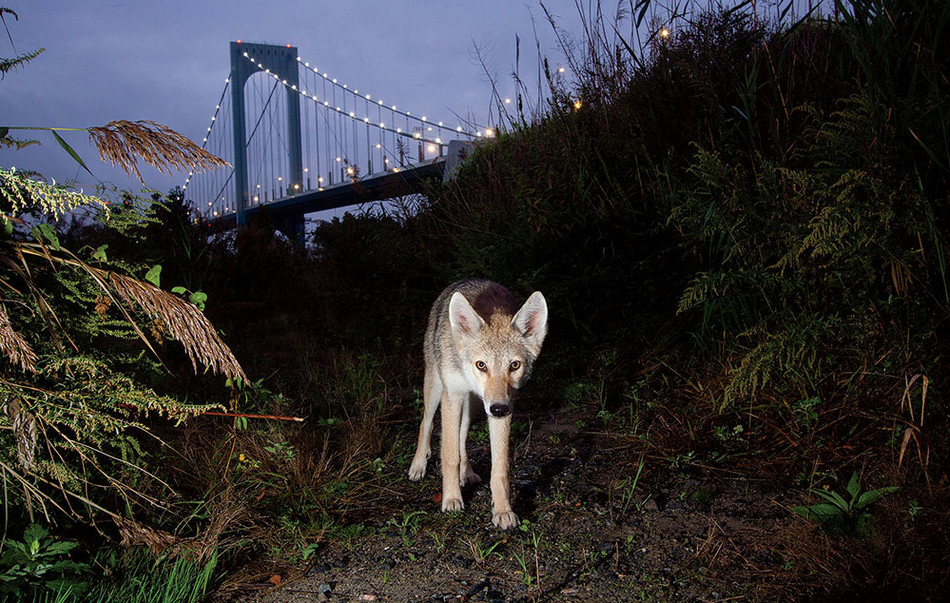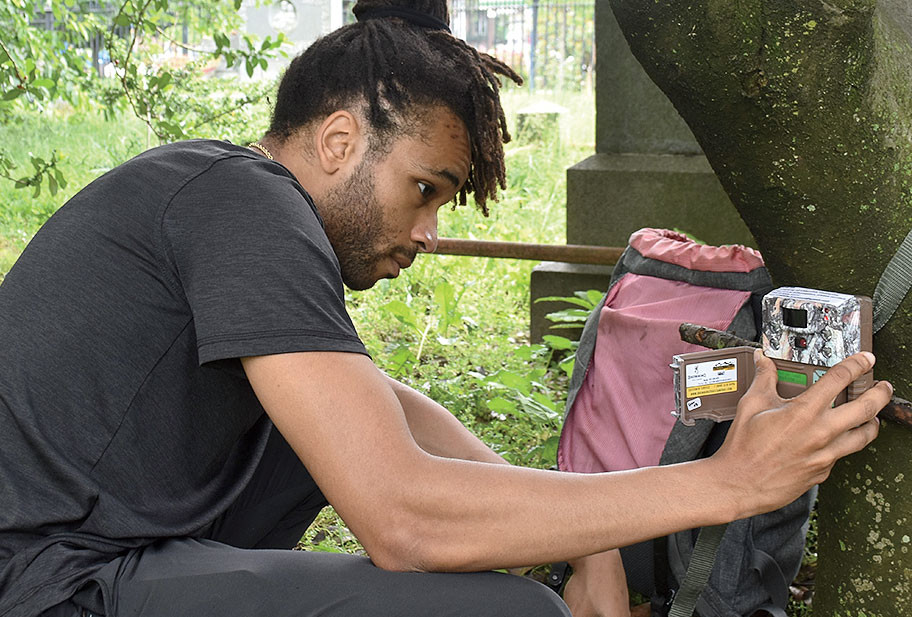A possum walks into a bar. That’s the start of a joke, right?
In fact, a possum really did nose its way into the crowd at Temkin’s Bar in the Greenpoint section of Brooklyn one night this past spring. Before it could order a drink, a young woman grabbed the marsupial by the scruff of its neck, marched it outside, and set it on the sidewalk. Patrons hooted and cheered as the possum scuttled away and disappeared to parts unknown.
The scene, which was caught on video and quickly went viral, is hardly unique these days. New York City, already the most densely populated metropolis in the US, is home to increasing numbers of wild animals. The city has been expanding its green spaces for decades and now has some seventy-eight thousand acres of forests, grasslands, wetlands, parks, lawns, and community gardens — prime real estate for possums, raccoons, skunks, groundhogs, rabbits, deer, foxes, and coyotes. Cleaned-up local waterways are home to growing populations of river otters and beavers; in the air, peregrine falcons, red-tailed hawks, bats, and rare native bees are frequently observed.
So approximately how many wild creatures are now living in New York City? Where are their favorite hangouts and dining spots? How often do they cross paths with humans, and what dangers might they pose?
To find out, Columbia scientists have launched one of the most ambitious studies of New York City wildlife to date. Led by epidemiologist Maria Diuk-Wasser and ecologist Sara Kross, the researchers are conducting in-depth censuses of multiple species to determine their populations, habitats, diets, and health. They have installed motion-detecting cameras at dozens of locations across Brooklyn, Queens, and Long Island’s Nassau County to observe medium-sized mammals like raccoons, possums, and skunks as they feed at night. They have also baited humane traps along the animals’ favored routes. After capturing them, the scientists screen the creatures for coronaviruses and distemper and outfit them with radio collars so their movements can be tracked.
Columbia scientists are also studying ticks and mosquitoes to learn how they interact with mammalian hosts, like white-tailed deer, to spread Lyme disease and other ailments. Future plans include bird counts and surveys about human encounters with wildlife.
The researchers say their work could ultimately help city officials craft land-management policies that promote biodiversity while minimizing health risks to humans. “A lot of these wild animals are interacting with each other and with us,” says Diuk-Wasser, who is an expert on the spread of tick-borne diseases. “It’s important to know who’s out there.”
This article appears in the Winter 2022-23 print edition of Columbia Magazine with the title "NYC: Where the wild things are."




